- Home
- Peter Cawdron
Monsters
Monsters Read online
Monsters
Peter Cawdron
thinkingscifi.wordpress.com
Copyright © Peter Cawdron 2012
All rights reserved
The right of Peter Cawdron to be identified as the author of this work has been asserted by him in accordance with the Copyright, Designs and Patents Act 1988
First published as an eBook by Peter Cawdron using Smashwords
ISBN: 9781301424689
All the characters in this book are fictitious, and any resemblance to actual persons living or dead is purely coincidental
Dedicated to
National Year of Reading
http://www.love2read.org.au/
Synopsis
Monsters explores the importance of reading against the backdrop of dystopia.
The fallout from a passing comet contains a biological pathogen, not a virus or a living organism, just a collection of amino acids, but these cause animals to revert to the age of the megafauna, when monsters roamed Earth.
Bruce Dobson is a reader. With the fall of civilization, reading has become outlawed. Superstitions prevail, and readers are persecuted like the witches and wizards of old. Bruce and his son James seek to overturn the prejudices of their day and restore the scientific knowledge central to their survival, but monsters lurk in the dark.
Prologue : Comet Holt
For those that could still read, for those that dared, newspapers were the best source of information about the collapse of the Old World. It had only been a couple of centuries since Comet Holt first appeared, but Nature was quick to reclaim her jewel given half a chance, undoing tens of thousands of years of human progress in what seemed like the blink of an eye.
Nature was vengeful. After billions of years of evolutionary pressure, she was not one to stand idly by while man re-created the world in his own image. She had taken her licks, she had endured earth-shattering asteroid impacts, the eruption of super-volcanoes that spanned hundreds of miles, and severe glaciation that had threatened to engulf the entire planet, transforming Earth into little more than a snowball, yet somehow life always endured. Homo sapiens were just another emergent species with a fragile hold on a span of a few million years at best, a few thousand if civilization was any measure. Life had flourished on Earth for billions of years, and would continue for billions more, regardless of mankind, regardless of Comet Holt.
Newspapers were a surprising link to the past. They had been intended as a disposable medium and were out-of-vogue when the comet arrived. The broadsheets, or tabloids as some of the more salacious papers were called, were a passing snapshot into the affairs of any given day, hurriedly printed on cheap, low-grade paper. Far from their heyday, when the daily print-run toppled presidents and spoke Vox populi, vox Dei, with the voice of the people echoing the sentiments of their God, newspapers had faded to little more than pulp-status in most countries, yet it was the daily periodicals that captured the fall of civilization in a roughly chronological sequence.
Newspapers provided a glimpse into the consumer desires from a bygone age, the distractions and hype that once seemed so important, and they cataloged news from far flung corners of a planet most would never venture to cross. Buried deep within their black on white print, scattered across days, weeks, months and years, lay the fragmented story of how the reign of mankind ground to a halt following the appearance of the comet. Among their petty advertisements for skin cream and new cars, among the frivolous reviews for local wine shows and the jaundiced opinion pieces on federal politics, lay the fragments of what happened as society collapsed under its own weight.
Comet Holt was billed as the celestial show of the millennium. Fifteen times larger than Halley's comet, its twin V-shaped tail lit up the night sky for months as it approached the sun from the outer reaches of the solar system. At first it was little more than a smudge, but its long, blue and white tail spread out more and more as it approached the sun. Space telescopes measured the tail as reaching over six hundred million kilometers in length, a staggering four times the distance from Earth to the sun.
The distinct V-shape drew considerable attention from media commentators, although professional astronomers pointed out that all comets had twin tails. NASA explained that the dust and gas streaming away from the glowing nucleus of the comet projected outward on slightly different angles. The dust tail, they said, was brighter and curved, revealing the orbital path of the comet, while the ionized gas was fainter, streaming directly away from the sun in a straight line. The public was entranced.
At its height, the comet's tail stretched across forty degrees of the night sky and was breathtaking to behold. Holt was a splash of white paint daubed on a starry sky. Van Gogh, it seemed, had been brought back to life.
Although it had never been seen before, scientists said Holt was a short-period comet, but one that originally orbited within the Oort cloud for billions of years before being unseated. At some point, the comet's cosmic ballet became perturbed and Holt drifted out of the Oort cloud, starting its long, slow fall toward the sun with a highly elliptic orbit that for hundreds of millions of years barely crossed the path of Neptune.
Scientists said Holt's initial planetary orbit was measured in tens of thousands of years. From there, it was just a matter of time before the gravitational attraction of Neptune either threw Holt out of the solar system or sent it plunging toward the sun. NASA calculated the stability of this orbit and the newspapers spoke of an age that saw the rise of mammals, the fall of dinosaurs, and the advent of bipedal apes before Comet Holt crossed in front of the oncoming Neptune and found itself flung toward the inner planets.
Comet Holt grew in intensity as it approached the sun. Each night it appeared earlier in the evening sky, lower, longer and brighter, until it looked like Holt would collide with the radiant reds and yellows of the setting sun. Holt rounded the sun, breaking up as it passed too close. The comet lost over half its mass in the process, with the majority of the comet breaking up and falling back into the sun. The flare of volatile materials unleashed during the comet's disintegration was visible only to orbiting astronomical observatories.
Although the comet's fiery death throes never competed with the brightness of the sun, the heavily-filtered photographs looked sensational in the newspapers. The science editor for the New York Times called the fragments that escaped the sun's fiery grip a 'necklace of pearls.' At first, they were barely visible in the dusk, soft specks of light moving away from the sun along the ecliptic. As the days passed, the fragments appeared later in the evening sky; a string of pearls, each with its own tail, each tail blurred as it stretched away from the horizon.
After a month, in the dark of a moonless night, the pearls shone with a radiance never before seen by the races of man. It was as though seven separate comets had been painted on the backdrop of the heavens, and the comparisons with Van Gogh were replaced with those of Michelangelo and Rembrandt.
The public fell in love with the pearls. Cities across the world would dim their lights on Sunday and Monday evenings so residents could enjoy their stunning beauty at its height. Like diamonds on black velvet, the comet fragments were mesmerizing, putting mankind's petty troubles and earthly contrivances in perspective for a while. Crime rates fell, as did acts of suicide. An age of romanticism swept the globe, transcending cultures, with the awe and wonder of nature being given a place of prominence and prestige, if only for a few short months.
Although comets had long been seen as the harbingers of doom, few saw any danger looming. Those that did were labelled crackpots and were ignored. The newspapers belittled them, calling them superstitious, paranoid, but even the naysayers couldn't have foreseen what was to come.
The pearls were no threat to mankind, at least that's what the new
spapers said. NASA calculated their orbit and determined they would pass harmlessly into the outer solar system, with a periodic cycle of over a hundred years. The next time the family of Holt appeared, they would have spread apart, forming distinctly separate comets, each with a slightly different periodic cycle, returning up to three years apart.
NASA said Holt would never appear the same again, that this generation was privileged to witness an astronomical spectacle like no other. They told the world the pearls were continuing to break up, leaving tiny fragments in their wake.
NASA predicted Earth would pass through this fine cloud once a year, giving the public an annual meteor shower thousands of times more sensational than the Leonids. Although meteor was too strong a word, they said, as the shower would glisten high in the atmosphere like sparkles on the Fourth of July. Being micro-meteorites the fragments were millimeters in size, just dust particles and flecks of snow and ice. None of them would ever reach the ground, so there was no danger, at least that's what the papers said.
The Sparkles, as they came to be known, were every bit as magnificent as NASA had predicted. Flashes of light rippled across the sky, appearing first in the constellation of Virgo, but slowly stretching out to span two other constellations as the month progressed. At their height, thousands of streaks of light were visible every few seconds. For a couple of weeks, it was as though the planet were under the constant gaze of a full moon. Some claimed it was bright enough to read a newspaper beneath the stars, at least that's what the media reported. For almost two months, the Sparkles continued. Then, as quickly as they had come, they were gone.
The aerosol-like remains of the Sparkles soared high in the jet stream, interrupting international air traffic for nine months. Several transatlantic flights were crippled by the fine ash, each of them hobbling in to London on a single engine. After two passenger jets crashed near Sydney, Australia, killing over eight hundred people, flights across the Pacific were suspended. The military continued to fly, but the loss of several fighter jets curtailed their activities to critical missions. Turbo-prop airplanes were more resilient, and so a fleet of military heavy-lifting aircraft was re-tasked to provide the government with transport, but the wear on engine parts due to the fine grit limited their effectiveness. Within weeks they were spending most of their time on the ground undergoing re-fits. Global travel had ground to a halt.
At first, the majority of people weren't too bothered by the interruption to air travel, and there was even some talk about the good this naturally imposed moratorium would do for the environment. Greenpeace noted that if modern man could live without airplanes for the best part of a year, then perhaps they weren't as necessary as everyone assumed. With romantic sunsets dominating the early evening, and each dawn being announced by sweeping vistas of orange, pink, yellow and purple, Comet Holt could be forgiven for interrupting holiday plans, at least that was the initial sentiment.
Opinions changed as the global economy faltered. Investors got nervous and companies struggled to adjust to life without air travel. The newspapers downplayed the impact, but the reality was air travel had become a form of commute as common as a taxi ride. Without it, companies turned to a virtual presence in remote locations, but it wasn't as effective. Business slowed, efficiency dropped, and inflation raced ahead, dampening economic confidence even further.
Later that year came the first of the drifts, followed by the floods. Eight million people died in North America alone that winter. The snow drifts were abnormal, that much everyone agreed upon, but what had caused them took time to unravel. In New York, the drifts reached heights of eighty feet, paralyzing the city for months on end. With over sixty major US cities affected by the drifts, the United States was helpless to prevent the loss of life on a scale never before seen outside of a world war.
Snow compacted into ice under the weight of the drifts, causing buildings to collapse. The ice was impossible to tunnel through, with demolition experts likening it to granite. Wall St moved to Queens, while the bulk of New Yorkers vowed not to be displaced by nature, but as the years passed it became increasingly obvious they were fighting against an incoming tide.
In Chicago, civil engineers compared the compact of ice to mountains arising suddenly out of the ground. Roads shifted, bridges fell. Interstate ground transport came to a halt. On the northern side of a number of apartment blocks in Boston, large packs of ice persisted through to the following summer, being hidden in the shade for most of the day.
NASA said that dust fines in the stratosphere, the charred remnants of the Sparkles, had led to the formation of these devastating snow storms. The fines, as they were called in the newspapers, were apparently as vaporous as cigarette smoke, but their dominance in the stratosphere upset global weather patterns. NASA predicted subsequent years wouldn't be as bad as the Sparkles reduced in intensity. They were wrong. The newspapers told them so.
The electronic world on which mankind had come to depend was the first of the catastrophic failures that sent Homo sapiens spiraling back into the Stone Age. The winter ice that killed so many crippled the electrical grid. Computer servers had become the bastions of knowledge and communication. Without power they became paperweights.
Few books survived that first winter. In the northern regions of Europe and the US, the dull glow of their smoldering remains kept millions alive long enough to perish in the floods that followed in the spring thaw. In the equatorial regions, heavy rains and sweltering summers caused those books and newspapers not kept in sealed containers to rot. Within a few years, books were a distant memory, hoarded by the rich.
The decade that followed the passing of Holt became known as the Fall. Those fragments of newspapers that survived the Fall were given a status akin to holy relics, as though somehow their preservation kept the past alive and contained a hope for the future. In reality, few read their contents anymore, even fewer understood them. Brittle sheets of typeset paper were sealed behind glass, kept in makeshift safes, wrapped in plastic and hidden under floorboards, their greatest value being found in trade. Some still read them, most didn't see the point, the general populace regarded the papers with almost medieval superstition, thinking knowledge had inflamed man's hubris predicating the Fall.
After a few decades, the wealthy chose to be buried in newspapers, wrapped in loose print pages, taking what precious little remained of the Old World to rot with them in the grave. Like diamonds and gold in a bygone age, the scarcity of newspapers caused even fleeting scraps of newsprint to become objects around which wealth could concentrate. As time passed, the realization that their true wealth lay in the knowledge they preserved became incidental, and then irrelevant.
During the Fall, water levels rose. The sea invaded the land, flooding low-lying areas, submerging coastal cities. The US government built levees around New York and Miami, but they were fighting a rear-guard action, leaving these cities isolated and exposed to the ravages of the sea. The need for a second line of defense to protect these cities in the event of a breach strained construction resources, limiting the area that could be effectively protected.
Environmental scientists said it wasn't just Comet Holt that was at fault, that the combined effect of global warming along with the greenhouse effect caused by the Sparkles had raised global temperatures by an average of four degrees.
In Europe, most of Holland, Belgium and the northern regions of France became a shallow inland sea. China's great rivers, that for thousands of years had sustained the burgeoning population, flooded on a scale that spanned hundreds of thousands of square miles, washing villages, towns and cities out to sea. Indonesia lost entire islands to rising sea levels, while several pacific nations slipped beneath the waves, but that wasn't the worst of the curses brought by Comet Holt.
Four degrees didn't sound like much of an increase, but it wasn't spread evenly around the globe, some places experienced only a moderate increase in the average local temperature. Trade winds shifted, sending warm air
over Antarctica and breaking up the great ice packs and glaciers that had dominated the continent for millions of years. Within a few years, the average depth of the glaciers covering Antarctica dropped from two thousand meters to a little over six hundred.
The Himalayas exacerbated the problem, with flood waters flowing down across the subcontinent of India, Pakistan and Bangladesh. The influx of fresh water crippled the coastal ecology of Asia, destroying food supplies and forcing mass migrations in search of sustenance. Those that escaped the floods succumbed to disease and famine, killing 1.4 billion people within the first decade. As tragic and heartrending as this catastrophe was, it too was not the worst of the curses brought on by the coming of Comet Holt.
Drought ravaged Asia, Africa and the Americas, crippling crop production. Hundreds of millions of people starved.
It might have been the climatic changes that brought man to his knees, but it was the rise of monsters that kept him there.
During the first few years, the monstrosities were dismissed as oddities. Mankind was too busy struggling with the natural disasters overwhelming civilization to understand what was happening at a biological level. Those scientists that had the luxury to investigate the gigantism arising within dogs, cats, wolves and bears struggled to understand the cause.
Birthrates dropped among domesticated farm animals like cows and pigs. For those that remained fertile, complications arose during birthing as sows, ewes and mares struggled to bear oversize stock, often proving fatal to both mother and child. The number of stillborn farm animals and complications during birthing resulting in death reached alarming levels, but the primary concern of scientists was the impact on food production, not the implications of rapid evolutionary change on the distribution of species. Natural Selection was pushing back against artificial selection.

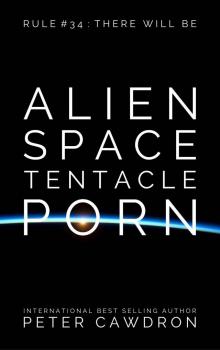 Alien Space Tentacle Porn
Alien Space Tentacle Porn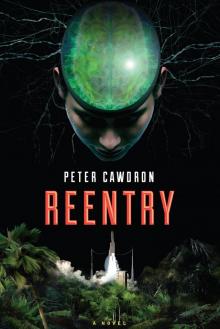 Reentry
Reentry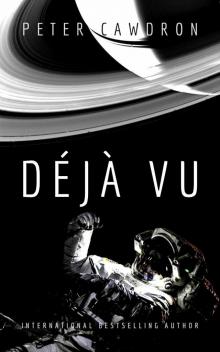 Déjà Vu (First Contact)
Déjà Vu (First Contact)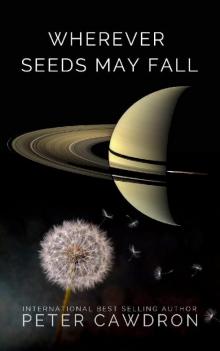 Wherever Seeds May Fall (First Contact)
Wherever Seeds May Fall (First Contact)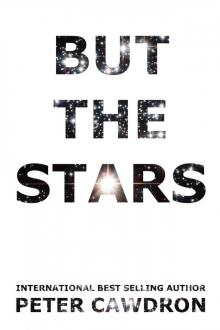 But The Stars
But The Stars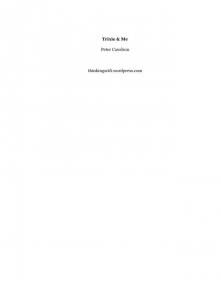 Trixie & Me
Trixie & Me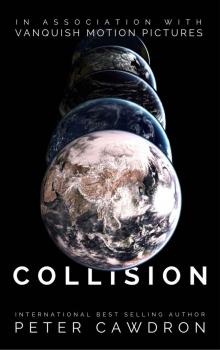 Collision
Collision Jury Duty (First Contact)
Jury Duty (First Contact)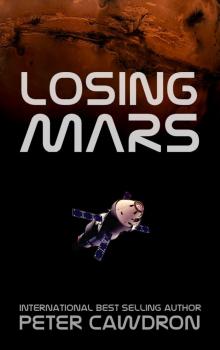 Losing Mars
Losing Mars We Are Legion (van Helsing Diaries Book 2)
We Are Legion (van Helsing Diaries Book 2) Van Helsing's Diaries (Books 1-3): Nosferatu
Van Helsing's Diaries (Books 1-3): Nosferatu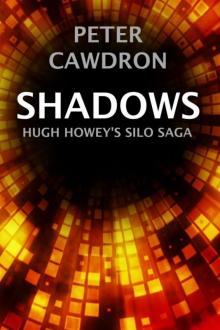 Shadows
Shadows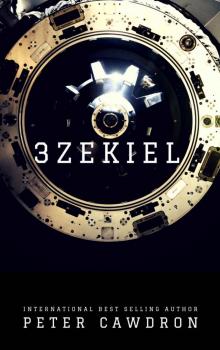 3zekiel (First Contact)
3zekiel (First Contact) Vampire (van Helsing Diaries Book 1)
Vampire (van Helsing Diaries Book 1) Xenophobia
Xenophobia All Our Tomorrows
All Our Tomorrows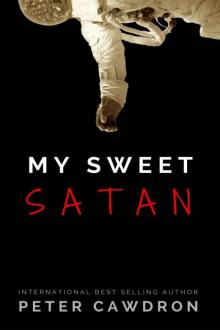 My Sweet Satan
My Sweet Satan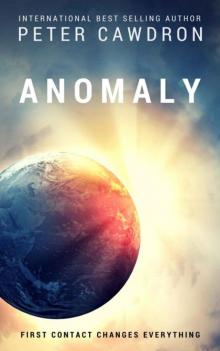 Anomaly
Anomaly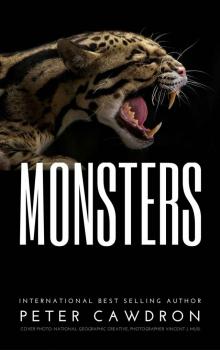 Monsters
Monsters